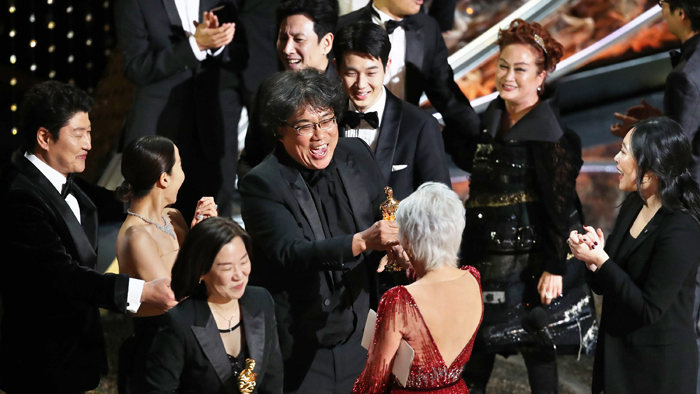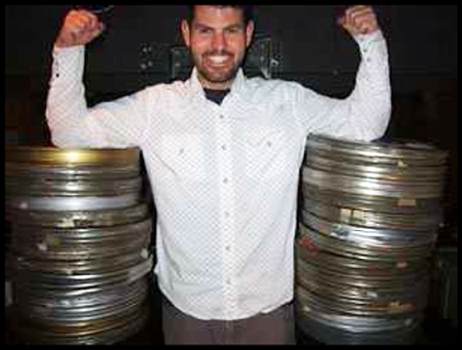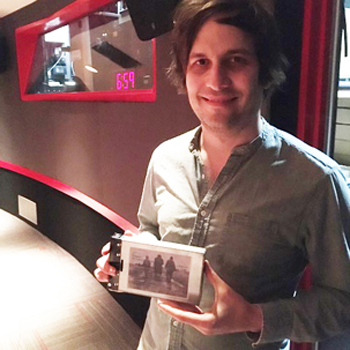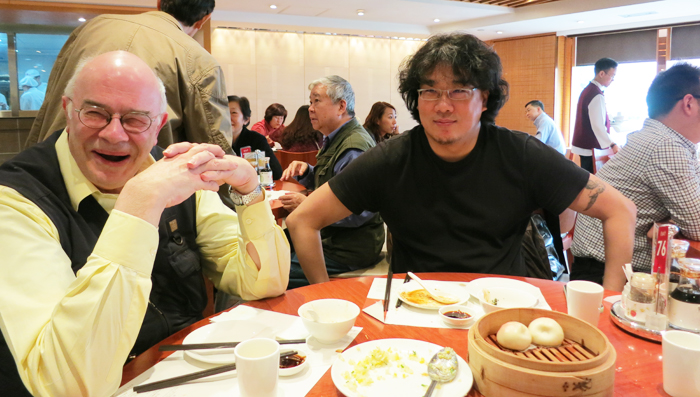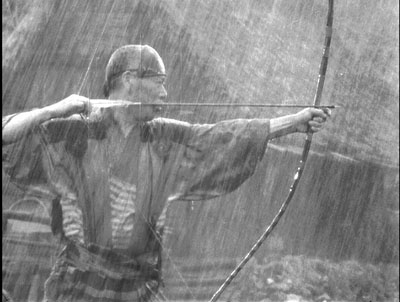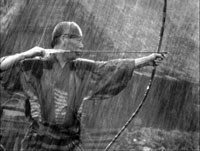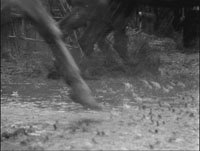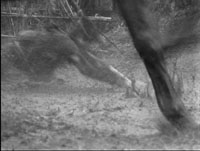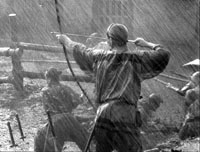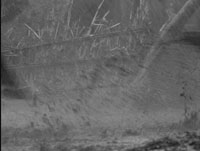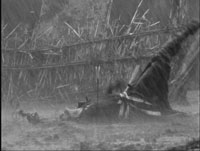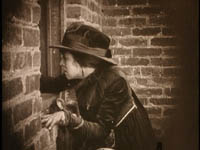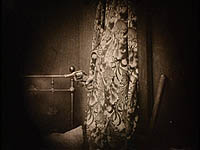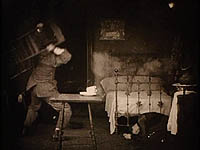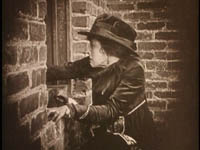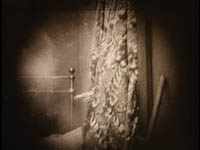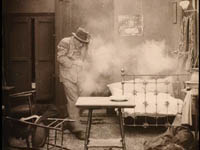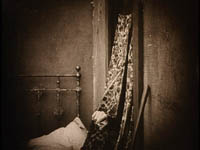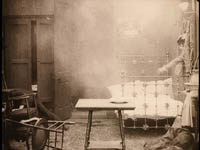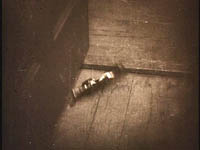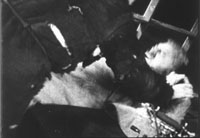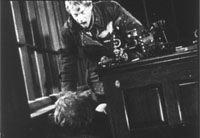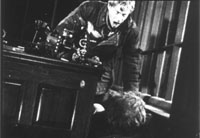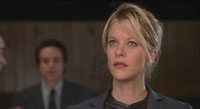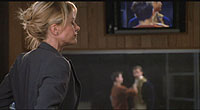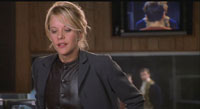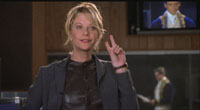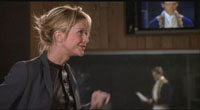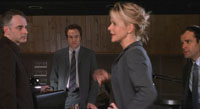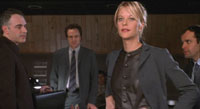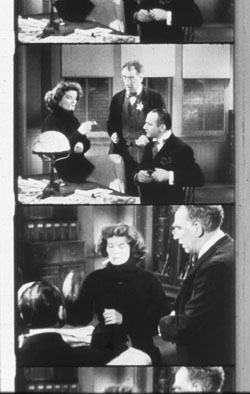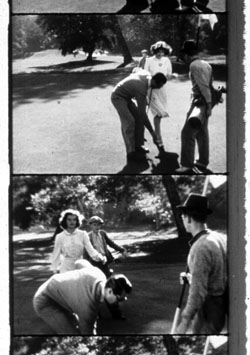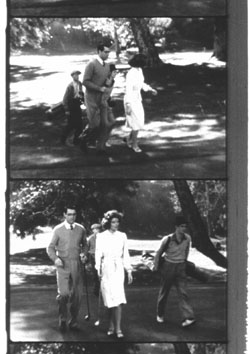Archive for the 'Directors: Mangold' Category
Awards! and a very long movie
Bong Joon-ho and team accept Oscar. Photo: New York Times.
DB here:
The big news is that Bong Joon-ho has pulled off a coup. Parasite won four major Academy Awards, including Best Picture–a first for a foreign-language title.
Throughout awards season he was his bemused, genial self, and at the big ceremony he charmed everyone with his easygoing generosity toward Scorsese, Tarantino, and others. He went beyond the standard appreciation for the other nominees by saying something too seldom said at this ceremony of superficial self-congratulation: What matters is cinema, from whenever and wherever.
We’ve been supporting Bong’s work since the first days of this blog, and it was thrilling to see his triumph last night. In homage, we’ve posted some earlier encounters with Bong on our Instagram feed.
Just as exciting were the awards given to another FoB (Friend of the Blog), James Mangold. Years ago I wrote about a visit to the studio where Donald Sylvester and his team were preparing sound for 3:10 to Yuma. What a pleasure to see his work acknowledged with an Oscar. I like Ford v. Ferrari a lot, and much of its impact comes from its sound design and its picture editing (which snagged another Oscar last night, this one to Michael McCusker and Andrew Buckland). Congratulations as well to Mr. Mangold, a fine director.
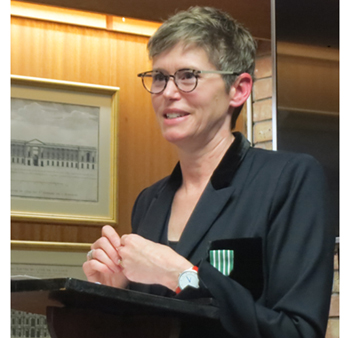 Usually I’m an Oscar cynic, and not just because forgettable pictures too often claim the top honors and masterpieces are ignored. I had many favorites in the race this year, but I’m happy that filmmakers who have worked as hard to make strong, resonant genre pictures got acclaim this time around.
Usually I’m an Oscar cynic, and not just because forgettable pictures too often claim the top honors and masterpieces are ignored. I had many favorites in the race this year, but I’m happy that filmmakers who have worked as hard to make strong, resonant genre pictures got acclaim this time around.
Less crowded but a big deal for us was another ceremony, held last Friday. Then our colleague Kelley Conway, another FoB, received the Chevalier d’Ordre des Arts et des Lettres from the French government. You know, the same award given to Philip Glass, Tina Turner, Cate Blanchett, Ang Lee, Mia Hansen-Löve, Mads Mikkelson, Sylvia Chang, et al. It was a swell get-together, overseen by Dean Susan Zaeske and conducted by Guillaume Lacroix, the French Consul General for the Midwest.
It was a great moment for us and our department. Kelley’s work includes books on the singer in French films of the 1930s, on Agnès Varda, and in progress, a study of French film culture after World War II. She has also guest-blogged for us (here and here and here).
Score another point for Cinema.
Finally, another big event, which took place weekend before last. Our Cinematheque screened Béla Tarr’s legendary Sátántangó. When we showed it last, intrepid projectionist Jared Lewis handled all those reels. This time, no-less-intrepid projectionist Mike King had to massage a DCP.
In that 2006 screening, there were maybe two dozen people. This time, despite freezing cold, there were over 100. And instead of that number dwindling in the course of the day, the audience actually grew. People came in at the middle and they stayed.
See? It’s just cinema being Cinema.
Thanks to our Cinematheque for its excellent programming, and a special thanks to Tony Rayns, who brought Bong to Vancouver many years ago and enabled me to meet him. Tony has been an untiring supporter of young Asian talent, and our sense of modern cinema owes a great deal to his championing directors in their formative years.
For more thoughts on Béla Tarr, go here.
Tony Rayns and Bong Joon-ho, Hong Kong 2014. Photo by DB.
Some cuts I have known and loved
DB here, belatedly:
We’ve been so busy revising our textbook, Film History: An Introduction, for its third edition that we’ve had no time to see new movies, let alone blog on our regular schedule. To those loyal readers who have been checking back occasionally, we say: Thanks for your patience. An entry that should intrigue you is in the works, possibly to be posted very soon.
In the meantime, here’s an item on a subject I’ve been meaning to slip in at some point. It’s a tribute to cuts I admire.
Warning: Superb as Eisenstein’s, Ozu’s, and Hitchcock’s cuts are, I’m deliberately leaving them out. Too obvious!
Kata and cutting
Okay, Kurosawa is an obvious choice too, but I can’t pass up some of the first outstanding cuts I noticed in his work, back when I was projecting movies for my college film society. The cuts occur during the climactic battle of Seven Samurai (1954).
As is well-known, Kurosawa shot the sequence with several cameras using different focal-length lenses. What is less often acknowledged, I think, is the power of certain cuts as they combine with fixed camera positions. In his last films, Kurosawa would rely strongly on long-lens shots that pan over the pageantry of his crowd scenes, but here he exploits static frames.
In the eye of the battle, Kambei fires his arrow in one shot, and a horseman falls victim to his marksmanship in the next. So far, so conventional. But what’s unusual is that we don’t actually see the arrow hit its target. Kambei fires, and Kurosawa cuts to an empty bit of the town square, churned with mud and dimly visible through horses’ legs. Only after an instant does a fallen bandit skid into the telephoto frame.
The same thing happens when Kambei shoots his second arrow: we must wait for the victim to plunge into the frame.
The result, I think, is a sense of exhilarating inevitability. The camera knows that the horseman will fall, and it knows exactly where. That’s a way of saying that Kurosawa’s visual narration fulfills our expectation, but with a slight delay. The empty frame prompts us to anticipate that the man will be hit—why else show it?—and we have a moment of suspense in waiting to confirm what we expect. Moreover, the force of Kambei’s arm is given us through a principle of Movie Physics: motion communicated to another body is magnified, not diminished, and the fixed frame allows us to see just how far the bodies are propelled. The arrow must have been Homerically powerful if it sends these men to earth with such impact.
Most directors would have panned to follow the victim as, wearing the arrow, he tumbled off his horse and hit the ground. This choice would have been natural given the multiple-camera situation. Instead Kurosawa had his camera operators frame the exact spot the stuntman would hit and wait for the action to hurtle into the shot. The patient expertise of Kambei’s marksmanship has its counterpart in the confidence of Kurosawa’s style. (1)
The moving image, Mr. Griffith, and us
Then there’s Intolerance (1916).
The Musketeer of the Slums is trying to seduce the young man’s wife, the Dear One. He pretends he can retrieve her baby. But his earlier conquest, the Friendless One, has followed him to the tenement, and at the same time the Boy has learned about the Musketeer’s visit. As the Musketeer attacks the Dear One, the Boy bursts in. The two men struggle and the Boy is momentarily knocked out; the Dear One has swooned. So no one sees what really happens next: From the window ledge the Friendless One fires her pistol and downs the gangster. She flees, and the boy believes that he is the killer. He will be charged with the murder.
Here’s what I admire. Griffith sets the situation up with his usual rapid crosscutting—the Musketeer and the Dear One struggling, the Boy returning, and the Friendless One crawling out on the ledge. When the fight starts, Griffith shows the Friendless One growing wild-eyed at the window. She fires once, and Griffith gives the action to us in three shots: a medium shot of her in profile, a medium-long shot of the pistol at the window (irised so we notice it), and a long-shot of the room, as the Musketeer is hit.
Griffith repeats the series of shots when the Friendless One fires again.
This time the Musketeer staggers out to the hall and dies. Neatly, Griffith gives us three more shots, but omits the setup showing the Friendless One. Cut to the curtains again, with her hand waving the pistol, then to another long shot of the room as the gun is tossed in, and finally to a close-up of the pistol landing on the floor.
If you’re looking for a pattern, the pistol in close-up is in effect substituted for the shot of the Friendless One at the start of each cycle. But I’m most interested in the shots of the pistol. The first one at the window goes by at blinding speed—ten frames in the two prints Kristin and I have examined. (2) That works out to a bit more than half a second, if you assume 16 frame per seconds as the projection rate, which was common at the time.
Okay, fussy, but I’ve already confessed that I turn into a frame-counter, when I get the chance. The second shot of the pistol poking out of the curtains, parallel to the first, is also ten frames long. Griffith seems to have been a frame-counter too.
What’s most remarkable is that the long-shot of the pistol being flung into the room is even briefer than these closer views—only seven frames long, or less than half a second at 16fps. As a nice touch, the close-up of the pistol landing in the corner is twice that (15 frames).
In the decades that followed, directors would believe that long shots shouldn’t be cut as fast as close-ups, so the Intolerance passage can strike us as a typical Griffith misjudgment. But I admire his willingness to cut long shots so fast. It certainly creates a percussive accent. In case we didn’t catch the story point, the close-up of the pistol hitting the floor clinches it.
This is the sort of sequence that the Soviet filmmakers probably learned from. They may even have gotten ideas from Griffith’s interspersed black frames (two by my count) before each of the shots of the pistol thrusting out of the curtain. (3)
Behind the desk
Speaking of the Russians, one of my favorite cuts in Pudovkin’s movies comes during a confrontation in The End of St. Petersburg (1927). The somewhat oafish young worker known only as the Lad, who has sold out his comrades, attacks the boss Lebedev in his office. He seizes the boss and shoves him down, jamming him between his desk and the window. We see the action from one angle and then what seems to be an opposing angle.
Actually, this is a big discontinuity. Using the desk, the telephone, and the window as reference points, we can see that in the first shot, the Lad moves in from the left side of the desk to push the boss down. In the second, he has come in from the right side and Lebedev’s head is pointing in the opposite direction. We can see the weirdness of this more clearly if we simply flip one of the frames: now it looks like a consistent change of angle.
Pudovkin has created an impossible event. But the cut gives the strong sense of graphic conflict that the Soviets (not just Eisenstein) sought, creating a kind of visual clatter to underscore the violence of the action. It’s possible that Pudovkin actually flipped a “correct” framing to create the disjunction, as some of his contemporaries did. (4)
Meg, all aflutter
Pudovkin’s cut reminds us that filmmakers can get away with a lot if they change the angle drastically. It’s harder to spot a cheated element or a mismatch if the new shot makes us reorient ourselves. Why does this happen? That’s a subject for research, as I’ll suggest at the end.
Here’s another tricky item. In Kate & Leopold (2001), Kate has brought her time-traveling guest to an audition for a butter commercial. In the studio, he’s behind her as she tries to convince her colleagues to watch him. As she talks, she first watches Leopold in the monitor above them, then swivels to talk to her boyfriend and other suits. The camera positions change 180 degrees.
This drastic shift works to prepare us for a remarkable cut a little later. Kate waves her hand, saying she only needs two minutes. She pivots her body, moving her hand downward.
Cut 180 degrees to a setup similar to the one we’ve seen earlier: She drops her hand to her side as she swings to us.
The gesture is smoothly matched. The only trouble is that it’s executed by the wrong hand. In the first shot Kate is wiggling her left hand, but in the second, it’s her right hand that continues the movement and drops to her hip.
I don’t think that many people would notice this. Indeed, when I first saw the film, I felt a bump hereabouts, but when I watched it over again on DVD, it looked fine to me. Then I watched it again and saw what was wrong. Even then, I thought I might be hallucinating. It’s one of the trickiest cheats I know of, and it’s beautifully done.
The real question is: Why don’t we notice it? We usually say, “Because we’re watching the story and ignore little irregularities.” But that’s not very satisfactory. Why isn’t the wave of Kate’s hand part of the story? We certainly notice it as expressing her attitude—hence as part of the story. And if you didn’t notice the disjunction in my End of St. Petersburg example, the same question arises: Isn’t the Lad’s attack on the boss the very story action we’re watching?
Consider the alternative. If director James Mangold had matched the left hand, it would have to cross the center of the frame as Kate pivots, shifting from screen left to screen right before landing at her hip. It would have been ostentatious and somewhat graceless, and perhaps that would have been distracting. So the mismatch is perhaps a line of least resistance, a compromise–as so many stylistic choices are.
In addition, Kristin suggests that our pickup is made easier by the placement and action of the hand. In both shots it’s quite central and moving in the same direction at the same rate, so that it’s easy to read as a graphically continuous element across the cut.
Perhaps too the fact that we’re switching our position 180 degrees leads us to expect, wrongly, the sort of reversal we get here—the way that we think our reflection in a mirror is the way we really look. And of course the earlier 180-degree switch, in which no mismatch occurs, probably serves to prime us for the shift in orientation this provides.
Mangold doesn’t mention the cut in his director’s commentary on the Kate & Leopold DVD, but when I asked him he said: “I think of shots as blocks, like legos or words. I don’t want them to resolve–come to an end. . . . Movement cuts work as long as the action is somewhat similar. The tough continuity cuts when you have a mismatch are the still ones.” Even if the mismatch here was accidental, it works very well. More generally, like other mismatches this one obliges us to think about what we see and what we don’t see when we watch a movie.
Hawks’ eyes
Among the many pleasures of Howard Hawks’ movies are their lovely matches on action. Of course his editors had a lot to do with this, but Hawks clearly had to provide the right footage so that it could be precisely matched. Bringing Up Baby (1938) yields a crisp cut as Susan, perched on the constable’s desk, strikes a match. (I show the cuts from a 16mm print; enough of this video stuff.)
Here Hawks seems to rely on what’s been called the two-frame rule: If you’re going to match on action, overlap the action by two frames to show a bit of the action again. This allows the audience time to absorb the fact of the cut and then to see the action as continuous. But Hawks could be quite cavalier about his matches as well. The golfing scene from Bringing Up Baby is full of wild cuts.
The caddies advance and recede, Susan and David are caught in different postures, and at some cuts they’re striding across different parts of the course. These cuts have a swagger about them, as if Hawks is daring us to spot his outrageous cheats. How many of us do?
All these trompe l’oeil effects can be studied psychologically, and prominent researchers who have tested such effects in the laboratory are attending our 11-14 June meeting of the Society for Cognitive Studies of the Moving Image. Dan Levin studies discontinuities in film from the standpoint of “inattentional blindness”; here he’s interviewed by Errol Morris. Barry Hughes of Arizona State University at Tempe has probed the two-frame rule, and he’s talking in Madison as well. Go here for more information; I’ve plugged the event previously here.
Next time, we expect: Secrets of film restoration.
(1) Kurosawa has prepared us for this passage when Kikuchiyo’s sword attacks the bandits earlier in the sequence. There too a shot of his flailing stroke is followed, after a pause on a patch of mud, by a falling horseman. But the calm deliberateness of Kambei’s drawing of his bow enhances the sense of inevitability, I think. Kiku does his damage through furious energy, but Kambei hits his mark thanks to a mature warrior’s almost contemplative precision.
(2) Forget checking these frame counts on DVD. I get several different counts, depending on the player I use. For reasons discussed here, DVDs don’t preserve the original film frames, and in a fast-cut passage you can lose any sense of how many frames the shot lasted.
(3) By the way, Griffith died on 23 July 1948, my first birthday.
(4) For more on this extraordinary movie’s use of discontinuity editing, see Vance Kepley, Jr., The End of St. Petersburg (London: Tauris, 2003).
Legacies
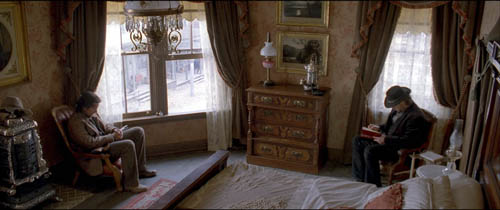
DB here:
By now James Mangold’s 3:10 to Yuma has had its critics’ screenings and sneak previews. It’s due to open this weekend. The reviews are already in, and they’re very admiring.
Back in June, I saw an early version as a guest of the filmmaker and I visited a mixing session, which I chronicled in another entry. I was reluctant to write about the film in the sort of detail I like, because I wasn’t seeing the absolutely final version and because it would involve giving away a lot of the plot.
I still won’t offer you an orthodox review of the film, which I look forward to seeing this weekend in its final theatrical form. Instead, I’ll use the film’s release as an occasion to reflect on Mangold’s work, on his approach to filmmaking, and on some general issues about contemporary Hollywood.
An intimidating legacy
It seems to me that one problem facing contemporary American filmmakers is their overwhelming awareness of the legacy of the classic studio era. They suffer from belatedness. In The Way Hollywood Tells It, I argue that this is a relatively recent development, and it offers an important clue to why today’s ambitious US cinema looks and sounds as it does.
In the classic years, there was asymmetrical information among film professionals. Filmmakers outside the US were very aware of Hollywood cinema because of the industry’s global reach. French and German filmmakers could easily watch what American cinema was up to. Soviet filmmakers studied Hollywood imports, as did Japanese directors and screenwriters. Ozu knew the work of Chaplin, Lubitsch, and Lloyd, and he greatly admired John Ford. But US filmmakers were largely ignorant of or indifferent to foreign cinemas. True, a handful of influential films like Variety (1925) and Potemkin (1925) made an impact on Hollywood, but with the coming of sound and World War II, Hollywood filmmakers were cut off from foreign influences almost completely. I doubt that Lubitsch or Ford ever heard of Ozu.
Moreover, US directors didn’t have access to their own tradition. Before television and video, it was very difficult to see old American films anywhere. A few revival houses might play older titles, but even the Museum of Modern Art didn’t afford aspiring film directors a chance to immerse themselves in the Hollywood tradition. Orson Welles was considered unusual when he prepared for Citizen Kane by studying Stagecoach. Did Ford or Curtiz or Minnelli even rewatch their own films?
With no broad or consistent access to their own film heritage, American directors from the 1920s to the 1960s relied on their ingrained craft habits. What they took from others was so thoroughly assimilated, so deep in their bones, that it posed no problems of rivalry or influence. The homage or pastiche was largely unknown. It took a rare director like Preston Sturges to pay somewhat caustic respects to Hollywood’s past by casting Harold Lloyd in Mad Wednesday (1947), which begins with a clip from The Freshman. (So Soderbergh’s use of Poor Cow in The Limey has at least one predecessor.)
Things changed for directors who grew up in the 1950s and 1960s. Studios sold their back libraries to TV, and so from 1954 on, you could see classics in syndication and network broadcast. New Yorkers could steep themselves in classic films on WOR’s Million-Dollar Movie, which sometimes ran the same title five nights in a row. There were also campus film societies and in the major cities a few repertory cinemas. The Scorsese generation grew up feeding at this banquet table of classic cinema.
In the following years, cable television, videocassettes, and eventually DVDs made even more of the American cinema’s heritage easily available. We take it for granted that we can sit down and gorge ourselves on Astaire-Rogers musicals or B-horror movies whenever we want. Granted, significant areas of film history are still terra incognita, and silent cinema, documentary, and the avant-garde are poorly served on home video. Nonetheless, we can explore Hollywood’s genres, styles, periods, and filmmakers’ work more thoroughly than ever before. Since the 1970s, the young American filmmaker faces a new sort of challenge: Now fully aware of a great tradition, how can one keep from being awed and paralyzed by it? How can a filmmaker do something original?
I don’t suggest that filmmakers have decided their course with cold calculation. More likely, their temperaments and circumstances will spontaneously push them in several different directions. Some directors, notably Peckinpah and Altman, tried to criticize the Hollywood tradition. Most tried simply to sustain it, playing by the rules but updating the look and feel to contemporary tastes. This is what we find in today’s romantic comedy, teenage comedy, horror film, action picture, and other programmers.
More ambitious filmmakers have tried to extend and deepen the tradition. The chief example I offer in The Way is Cameron Crowe’s Jerry Maguire, but this strategy also informs The Godfather, American Graffiti, Jaws, and many other movies we value. I also think that new story formats like network narratives and richly-realized story worlds have become creative extensions of the possibilities latent in classical filmmaking.
James Mangold’s career, from Heavy onward, follows this option, though with little fanfare. He avoids knowingness. He doesn’t fill his movies with in-jokes, citations, or homages. Instead, he shows the continuity between one vein of classical cinema and one strength of indie film by concentrating on character development and nuances of performance. In an industry that demands one-liners and catch-phrases sprinkled through a script, Mangold offers the mature appeal of writing grounded in psychological revelation. In a cinema that valorizes the one-sheet and special effects and directorial flourishes, he begins by collaborating with his actors. He is, we might say, following in the steps of Elia Kazan and George Cukor.
Sandy
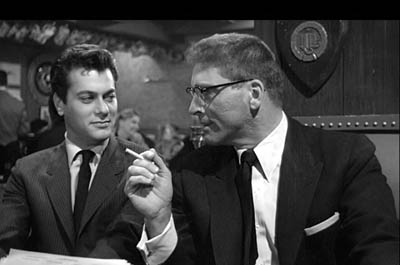
By his own account, Mangold awakened to these strengths during his formative years at Cal Arts, where he studied with Alexander Mackendrick. Mackendrick directed some of the best British films of the 1940s and 1950s, but today he is best known for Sweet Smell of Success.
Seeing it again, I was struck by the ways that it looks toward today’s independent cinema. It offers a stinging portrait of what we’d now call infotainment, showing how a venal publicist curries favor with a monstrously powerful gossip columnist. It’s not hard to recognize a Broadway version of our own mediascape, in which Larry King, Oprah, and tmz.com anoint celebrities and publicists besiege them for airtime. While at times the dialogue gets a little didactic (Clifford Odets did the screenplay), the plotting is superb. Across a night, a day, and another night, intricate schemes of humiliation and aggression play out in machine-gun talk and dizzying mind games. It’s like a Ben Jonson play updated to Times Square, where greed and malice have swollen to grandiose proportions, and shysters run their spite and bravado on sheer cutthroat adrenalin.
Sweet Smell was shot in Manhattan, and James Wong Howe innovated with his voluptuous location cinematography. “I love this dirty city,” one character says, and Wong Howe makes us love it too, especially at night.
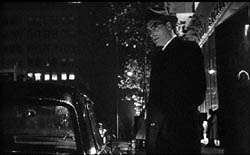
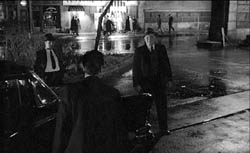
Today major stars use indie projects to break with their official personas, and the same thing happens in Mackendrick’s film. Burt Lancaster, who had played flawed but honorable heroes, portrayed the columnist J. J. Hunsecker with savage relish. “My right hand hasn’t seen my left hand in thirty years,” he remarks. Tony Curtis, who would go on to become a fine light comedian, plays Sidney Falco as a baby-faced predator, what Hunsecker calls “a cookie full of arsenic.” Falco is sunk in petty corruption, ready to trade his girlfriend’s sexual favors for a notice in a hack’s column. Hunsecker and Falco, host and parasite, dominator and instrument, are inherently at odds, then in a breathtaking scene they double-team to break the will of a decent young couple. There are no heroes. Nor, as Mangold points out in his Afterword to the published screenplay, do we find any of that “redemption” that today’s producers demand in order to brighten a bleak story line.
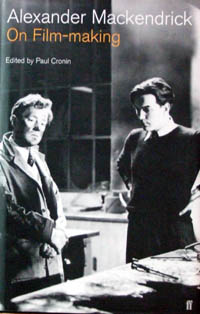 Mackendrick must have been a wonderful teacher. On Film-Making, Paul Cronin’s published collection of his course notes, sketches, and handouts, forms one of our finest records of a director’s conception of his art and craft. Offering a sharp idea on every page, the book should sit on the same shelf with Nizhny’s Lessons with Eisenstein.
Mackendrick must have been a wonderful teacher. On Film-Making, Paul Cronin’s published collection of his course notes, sketches, and handouts, forms one of our finest records of a director’s conception of his art and craft. Offering a sharp idea on every page, the book should sit on the same shelf with Nizhny’s Lessons with Eisenstein.
Mangold became a willing apprentice to Mackendrick. “He taught me more craft than I could articulate, but beyond that, he showed me how hard one had to work to make even a decent film.” (1) Mangold’s afterword to the Sweet Smell screenplay offers a precise dissection of the first twenty minutes. He shows how the script and Mackendrick’s direction prepare us for Hunsecker’s entrance with the utmost economy. Mangold traces out how five of Mackendrick’s dramaturgical rules, such as “A character who is intelligent and dramatically interesting THINKS AHEAD,” are obeyed in the film’s first few minutes. The result is a taut character-driven drama, operating securely within Hollywood construction while opening up a sewer in a very un-Hollywood way. Surely Sandy Mackendrick’s boldness helped Mangold find his own way among the choices available to his generation.
Movies for grownups
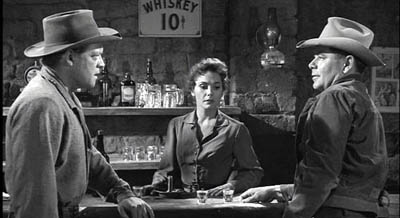
Mangold has often mentioned his love for classic Westerns; on the DVD commentary for Cop Land he admits that he wanted it to blend the western with the modern crime film. But why Delmer Daves’ 3:10 to Yuma?
The Searchers, Rio Bravo, and The Man Who Shot Liberty Valance were objects of veneration for directors of the Bogdanovich/ Scorsese/ Walter Hill generation, while Yuma seemed to be a more run-of-the-mill programmer. To American critics in the grips of the auteur theory, Delmer Daves sat low in the canon, and Glenn Ford and Van Heflin offered little of the star wattage yielded by John Wayne, James Stewart, and Dean Martin. In retrospect, though, I think that you can see what led Mangold to admire the movie.
For one thing, it’s a close-quarters personal drama. It doesn’t try for the mythic resonance of Shane or The Searchers or Liberty Valance, and it doesn’t relax into male camaraderie as Rio Bravo does. The early Yuma simply pits two sharply different men against one another. Ben Wade is a robber and killer who is so self-assured that he can afford to be courteous and gentle on nearly every occasion. Dan Evans is a farmer so beaten down by bad weather, bad luck, and loss of faith in himself that he takes the job of escorting the killer to the train depot.
That dark glower that made Glenn Ford perfect for Gilda and The Big Heat slips easily into the soft-spoken arrogance of Wade. His self-assurance makes it easy for him to play on all of Evans’ doubts and anxieties. In counterpoint, Van Heflin gives us a man wracked by inadequacy and desperation; his flashes of aggression only betray his fears. In the end, his courage is born not of self-confidence but of sheer doggedness and a dose of aggrieved envy. He has taken a job, he needs the money to provide for his family, and, at bottom, it’s not right that a man like Wade should flourish while Evans and his kind scrape by. As in Sweet Smell of Success, the drama is chiefly psychological rather than physical, and the protagonist is far from perfect.
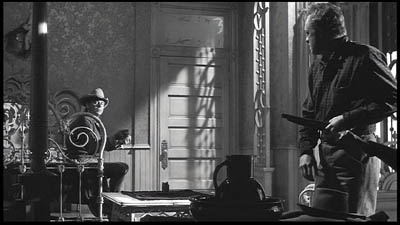
Daves shows the struggle without cinematic flourishes, in staging and shooting as terse as the prose in Elmore Leonard’s original story. Deep-focus images and dynamic compositions maintain psychological pressure, and as ever in Hollywood films, undercurrents are traced in postures and looks, as when Wade in effect takes over Evans’ role as father at the dinner table.
One more factor, a more subliminal one, may have attracted Mangold to Daves’ western. 3:10 to Yuma was released in 1957, about two months after Sweet Smell of Success. Both belong to a broader trend toward self-consciously mature drama in American movies. Faced with dwindling audiences, more filmmakers were taking chances, embracing independent and/or East Coast production, and offering an alternative to teenpix and all-family fare. 1957 is the year of Bachelor Party, Twelve Angry Men, Edge of the City, A Face in the Crowd, The Garment Jungle, A Hatful of Rain, The Joker Is Wild, Mister Cory (also with Tony Curtis), No Down Payment, Pal Joey, Paths of Glory, Peyton Place, Run of the Arrow, The Strange One, The Tarnished Angels, The Three Faces of Eve, Twelve Angry Men, and The Wayward Bus. These films and others featured loose women, heroes who are heels, and “adult themes” like racial prejudice, rape, drug addiction, prostitution, militarism, political corruption, suburban anomie, and media hucksterism. (Who says the 1950s were an era of cozy Republican values and Leave It to Beaver morality?) Today many of these films look strained and overbearing, but they created a climate that could accept the doggedly unheroic Evans and the proudly antiheroic Sidney Falco.
3:10 x 2
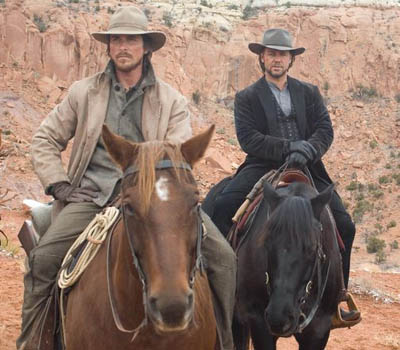
Mangold’s remake is a re-imagining of Daves’ film, more raw and unsparing. Both films give us the journey to town and a period of waiting in a hotel room. In the original, Daves treats the sequences in the hotel room as a chamber play. Each of Wade’s feints and thrusts gets a rise out of Evans until they’re finally forced onto the street to meet Wade’s gang and the train. Mangold has instead expanded the journey to the railway station, fleshing out the characters (especially Wade’s psychotic sidekick) and introducing new ones. This leaves less space for the hotel room scenes, which are I think the heart of Daves’ film.
At the level of imagery, the new version is firmly contemporary. The west is granitic; men are grizzled and weatherbeaten. When Wade and Evans get into the hotel room, Daves’ low-angle deep-focus compositions are replaced by the sort of brief singles that are common today. As in all Mangold’s work, minute shifts in eye behavior deepen the implications of the dialogue.
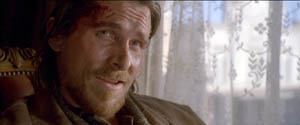
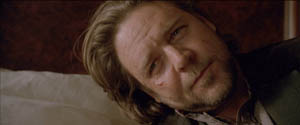
Similarly, the cutting, the speediest of any Mangold film, is in tune with contemporary pacing. At an average of 3 seconds per shot, it moves at twice the tempo of Daves’ original. Mangold has been reluctant to define himself by a self-conscious pictorial style. “I think writer-directors have less of a need sometimes to put a kind of obvious visual signature over and over again on their movies . . . . I don’t need to go through this kind of conscious effort to become the director who only uses 500mm lenses.” (2)
Mangold puts his trust in well-carpentered drama and nuanced performances. Daves begins his Yuma with Wade’s holdup of a stage, linking his movie to hallowed Western conventions, but Mangold anchors his drama in the family. His film begins and ends with Evans’ son Bill, who’s first shown reading a dime novel. We soon see his father, already tense and hollowed-out. At the end Mangold gives us a resolution that is more plausible than that of Leonard’s original or Daves’ version. What the new version loses by letting Evans’ wife Alice drop out of the plot it gains by shifting the dramatic weight to Bill in the final moments. The conclusion is drastically altered from the original, and it shocked me. But given Mangold’s admiration for the shadowlands of Sweet Smell, it makes sense.
In an interview Mangold remarks that Mackendrick distrusted film school because it stressed camera technique and didn’t prepare directors to work with actors. “It’s a giant distraction in film schools that in a way, by avoiding the world of the actor, young filmmakers are avoiding the most central relationship of their lives in the workplace.” (3) As we’d expect from Mangold’s other films, the central performances teem with details. Bale cuts up Crowe’s beefsteak, and Crowe gestures delicately with his manacles when he softly demands that the fat be trimmed. Bale’s gaunt, limping Evans, a Civil War casualty, becomes an almost spectral presence; his burning glances reveal a man oddly propelled into bravery by his failures. Crowe’s Ben Wade, for all his intelligence and jauntiness, is oddly unnerved by this farmer’s haunted demeanor. Actors and students of performance will be kept busy for years studying the two films and the way they illustrate different conceptions of the characters and the changes within mainstream cinema.
Sometimes I think that Hollywood’s motto is Tell simple stories with complex emotions. The classic studio tradition found elemental situations and used film technique and great performers to make sure that the plot was always clear. Yet this simplicity harbored a turbulent mixture of contrasting feelings, different registers and resonances, motifs invested with associations, sudden shifts between sentiment and humor. In his commitment to vivid storytelling and psychological nuances, Mangold has found a vigorous way to keep this tradition alive. Sandy would have been proud.
(1) James Mangold, “Afterword,” Clifford Odets and Ernest Lehman, Sweet Smell of Success (London: Faber, 1998), 165.
(2) Quoted in Stephan Littger, The Director’s Cut: Picturing Hollywood in the 21st Century (New York: Continuum, 2006), 317.
(3) Quoted in Littger, 313.
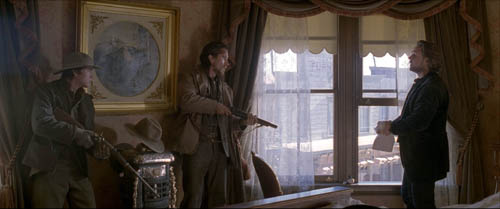
PS 9 Sept: Susan King’s article in the Los Angeles Times explains that Mangold first got acquainted with Daves’ film in Mackendrick’s class. “We would break down the dramatic structure of the film. This one really got under my skin, partly because it always really moved me. It also felt original in scope in that it was very claustrophobic and character-based.” King’s article gives valuable background on the difficulties of getting the film produced.
Christian Bale picks up a rail
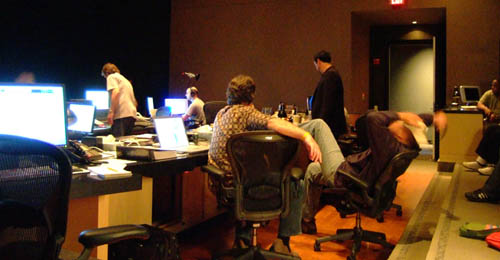
DB here:
In James Mangold’s 3:10 to Yuma, some law officers are taking the captured killer Ben Wade (Russell Crowe) to the farmhouse of Dan Evans (Christian Bale). When the stagecoach sinks into a rut, Evans limps out of his house, snatches up a fence rail, and uses it to pry the wheel free.
Not an earth-shattering moment, but one I got to know pretty well last week when I visited the mixing session as the director’s guest. About a year ago, Jim sent me an email expressing his liking for my book The Way Hollywood Tells It. We kept corresponding through the planning and production of Yuma, and last month he asked me if I wanted to see the picture-locked film and visit a sound mixing session.
As we say in Wisconsin: You bet.
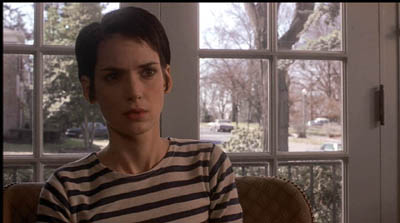
Watch their eyes
Mangold has been prolific, turning out seven films in about twelve years. Heavy, CopLand, Girl, Interrupted, Kate and Leopold, Identity, and Walk the Line nicely illustrate the difference between convention and cliché. While embracing each genre’s conventions, Mangold always tries to enlarge, enrich, and explore them. Where other directors try for brute impact, he seeks out implication and understated lyricism. Above all there are the nuanced performances, female ones in particular. (Remember those Oscars for Angelina Jolie and Reese Witherspoon.) If anybody can bring the psychological nuances of that elusive “indie sensibility” to mainstream filmmaking, James Mangold is a likely candidate.
As a writer-director, he balances concern for story and character with a carefully wrought visual style. The opening of Heavy makes a shabby tavern beautiful through precise compositions and geometrical cutting that recall Ozu, whom Mangold has acknowledged as an influence.
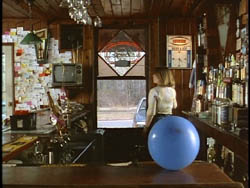
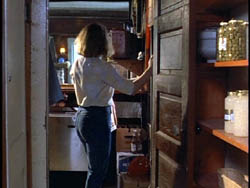
At the same time, he has understood one of the great strengths of the Hollywood tradition—letting the actors’ faces tell as much of the story as possible. He believes that the script should include not only dialogue but also “pieces of silent acting.” John Ford remarked of actors: “Watch their eyes.” Mangold’s version of this precept can be found on the DVD commentary of Girl, Interrupted: “Actors dance with their looks and glances.”
In fact, his commentary tracks are gold. Anybody who wants to know more about the craft of writing and directing should simply sit down and listen. Mangold is not one of those I-do-what-I-feel guys; he channels the story’s feeling into precise, writable and filmable moments, and his commentary tracks explain how he does it.
Delmer Daves’ original 3:10 to Yuma (1957) is one of Mangold’s favorite films, as he explained several years ago in the interview with Tod Lippy that prefaces the published screenplays of Heavy and CopLand. He’s been bold enough to remake it, in an era in which Westerns are supposed to be unpopular. I was keen to see what a director renowned chiefly for intimate psychological dramas would do with a Western. Yet maybe the gap isn’t so great after all. Mangold points out in the Lippy interview that most classic Westerns aren’t action pictures but character studies.
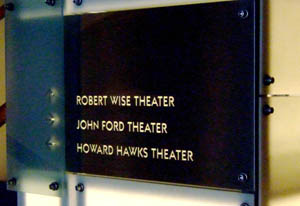
In the shadow of John Ford
The Yuma production has been chronicled elsewhere on the internets, so I won’t rehearse it here. I came in on the third day of mixing. The session was held on the Twentieth Century Fox lot, at the John Ford theater (a lucky spot, surely). Mangold, his editor Mike McCusker, and half a dozen sound specialists had already been working through the morning. The team included the lauded sound rerecording mixer Paul Massey, winner of three BAFTAs and recipient of five Oscar nominations. His work includes Nixon, Clueless, Gattaca, Jerry Maguire, Master and Commander: The Far Side of the World, the second and third Pirates of the Caribbean films, and not least, the wonderful SCTV parody The Last Polka.
For me, it was an intensive four-hour seminar. Once I start to focus on a movie soundtrack, I have to marvel at the level of precision you can find. As we tell our students: It’s hard to really watch a movie, but even harder to really listen to it.
When Jim asked if I’d sat in on a mix before, I had to confess that I’d visited only one—a session in which Walter Murch was blending rustling foliage and mosquito noises for a scene in Apocalypse Now. (Must blog about that some day.) Things had changed a lot since the 1970s. No longer was a scratchy black-and-white print run and rerun; now we get a 4K image on a large screen, crisp and bright and frozen on a frame for as long as you like. Now there are several mixing stations, each one with a glowing Mac monitor alongside.
The standard division of labor endures, but it’s much more refined. Music is filed on many tracks and with a few mouseclicks can be reworked in tempo, timbre, and orchestration. The dialogue tracks consist of thousands of stored line readings, ready to be pulled up in moments. As for sound effects, at this point Yuma had 96 effects tracks, each of them already premixed from many sources. I usually notice the impact that the digital revolution has had on camerawork and editing, but this session really drove home to me the ways in which the computer has made the art of the soundtrack more exact and exacting.
Details, details
Most of the session was devoted to effects. The first problem was that the track seemed to Mangold too “absent,” too thin and empty. Mike remarked that he didn’t feel the atmosphere, the air between the more discrete noises. “There’s nothing of any character that’s holding it all together,” Mike said. The difficulty, though, as Jim pointed out, is that if you simply add in more sounds, you can confuse things. “If we hear just one moo, that becomes an event.” How to thicken the acoustic atmosphere without muddying it or creating competing noises?
Step by step, the team filled in the ambience. They added tiny air currents, always seeking to avoid what Mangold called “radio wind.” We got very soft and distant moos, shifting horse hooves, even low “horse vocals.” After it was all blended, I found the ambience full and modest, but Jim and the others felt that it was still too bright. They would go back later and mute it a bit.
Now that the ambience was fleshed out, the rest of the session was devoted to specific effects and a few lines. Jim asked for a heaving sound as the stagecoach burst out of the rut, more jingling on the coach reins, a little clinking on Russell Crowe’s handcuffs, a gun-cock. When Crowe’s henchman (Ben Foster), watching from the ridge, urges his horse to move, he makes a smootchy tsk-tsk; Mangold wanted to give it a slightly mocking edge, suggesting the killer’s disdain for the guards’ efforts to protect Wade.
During the 1990s I’d noticed the greater detailing of movie soundtracks. I heard garments brushing against sofas and flakes of tobacco crackling when someone lit a cigarette. Now I was seeing and hearing how skilled artisans orchestrated thousands of such sonic micro-events. They clarified a muffled line. They inserted the sound of stagecoach springs shifting. The words “Good luck” were shifted eight frames. At one point Jim asked for a new line to be put in. “We need a ‘Let’s go.'” “Should I steal it?” “Steal it.” How much of this would be heard in the typical multiplex, or even in fancy home theatres? These guys were going all the way down, creating something of great finesse.
Jim reminded me that sound can create a sense of visual momentum too. The coach drives off in two shots, a long shot and an extreme long shot, and Mangold thought it seemed to go a bit faster in the second. So he added noise that gave an accelerating launch to the first shot.
Then there were Mr. Bale’s steps and the rail he picks up, which gave me an acoustic hallucination.
David is hearing things
As Dan Evans limps out of the cabin (he was wounded in the war), Jim found his footsteps too thudding. He wanted to hear that they were “grounded,” that there was some loose earth underfoot. The team worked to add the textures of pebbles and grit as Evans makes his way to the coach. The action was replayed many times. As the texture thickened, the fence rail that Evans grabs started to sound different to me. At first it was a soft but distinct scrape against the ground; at the end of the mix, it had a faintly twangy timbre. I congratulated the team on giving the rail its own little moment.
They looked at me. They hadn’t done a thing to the rail.
Two explanations arise, maybe both correct. (1) The sound team said that constantly replaying a clip can create such little mirages. Faced with so much repetition, maybe the mind needs to project some variation into it. (2) Changing the texture of the whole scene can alter our sense of the individual, unchanged elements. If there was a little twang to the rail, perhaps it came from overtones or other emergent qualities of the mix.
Maybe too, in my third hour of concentrating on minutiae of the track, I was getting oversensitive to sound.
Realism and convention
After the stagecoach drives off, Wade and the men guarding him trudge into Evans’ cabin. There’s a short scene with Wade and his wife, and that too needed its ambient filling in. I noticed that the banker, first glimpsed inside the cabin, is somewhat closer to the couple a few shots later. Jim noticed it too. In a jiffy three or four very soft bootsteps and slightly creaking boards were added, so that subliminally we were prepared to see the banker on the porch.
Night falls and two of the men guarding Wade are lingering on the cabin porch. It was simple dialogue, filled out with the atmospheric sound. The sound mixers had to redo one actor’s line reading, yanking an alternative out of the files. Jim still wasn’t satisfied and thought they might reloop the line later. Most interesting was Jim’s idea to add some softly clinking dishes to the tail of the scene, preparing us for the cut inside to Evans’ family at dinner with Wade. In these ways, barely perceptible sound smooths over cuts and shifts of point-of-view.
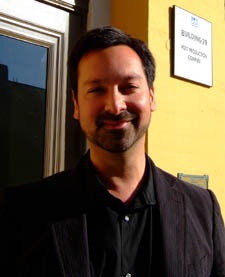 In the course of all this, as Paul and Mike and the others were fixing things, Jim came back to talk with me. He answered my questions and we chatted about directors, mostly Spielberg. Close Encounters is a favorite of his, and he pointed out ways in which it’s been influential on a range of other movies. He also showed how aware he is that realism in sound goes only so far and that pure conventions often kick in. In a movie, when somebody hangs up a phone abruptly, the person on the other end hears a dial tone. Does that ever happen in life? You just get silence. But the dial tone conveys a stronger sense that the line has been broken.
In the course of all this, as Paul and Mike and the others were fixing things, Jim came back to talk with me. He answered my questions and we chatted about directors, mostly Spielberg. Close Encounters is a favorite of his, and he pointed out ways in which it’s been influential on a range of other movies. He also showed how aware he is that realism in sound goes only so far and that pure conventions often kick in. In a movie, when somebody hangs up a phone abruptly, the person on the other end hears a dial tone. Does that ever happen in life? You just get silence. But the dial tone conveys a stronger sense that the line has been broken.
Jim halted the session as the family dinner scene began. The team would continue to polish it, and he’d be back tomorrow to keep going. I snapped a picture of him just before he left. Later, I caught up with Mike McCusker, who also edited Walk the Line. He has an enormous respect for Mangold, saying that his success with female performers was reminiscent of Cukor’s accomplishments.
Next day, watching the premix version of the whole movie, I saw Christian Bale limp thuddingly to the coach. Almost no moos or jingles, and definitely no clinking crockery. No twang when he picked up the rail. You almost never get a chance to notice this sort of before-and-after differences on soundtracks, and it brought home to me how much skill and effort would go into reworking every scene. Making movies is really, really hard work. And I remembered another reason I like movies: They sharpen your senses.
Coming attractions
I plan to write more on 3:10 to Yuma in a few days. In the meantime, Kristin may be posting her experience at another mixing session–that one in Wellington, New Zealand in May. Over the next week we’ll also be filing reports from Cinema Ritrovato in Bologna. Sign up for a feed if you want to keep abreast of developments.












